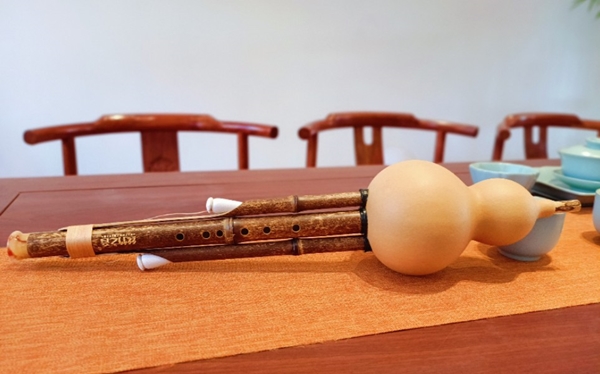Exploring the Pronunciation Art of Hulusi: A Comprehensive Guide for Deepening Analysis and Practical Improvement
Hulusi, as a traditional wind instrument originating from Yunnan, China, has a graceful and melodious tone, deep affection, and distinctive features. Mastering the pronunciation skills of gourd silk is a crucial step for every performer from beginner to mastery. The following will provide a detailed analysis of the pronunciation skills of hulusi and corresponding practice methods.

1、 Breath control
Firstly, good use of breath is the foundation for ensuring clear and full pronunciation of gourd silk. Adopting abdominal breathing method, the breath is deep and powerful, and the airflow output is regulated through the contraction and expansion of abdominal muscles. When playing, it is necessary to maintain a stable and long-lasting breath to avoid fluctuations in strength and weakness, which can be achieved through long-term breathing training and long pitch practice.
2、 Mouth shape and damper setting
The correct mouth shape is crucial for pronunciation. Gently press the upper lip against the top of the gourd silk blowing mouth, and the lower lip forms a natural "air door" (i.e. the gap between the upper and lower lips) to ensure that the airflow is concentrated and impacts the reed. The size of the damper should be adjusted according to the pitch. In the low range, the damper is relatively small, while in the high range, it is appropriately enlarged to ensure accurate pitch in different ranges.
3、 Fingering accuracy
The pronunciation of hulusi is closely related to the operation of pressing holes with fingers. The pronunciation of each note requires fingers to accurately cover or release the sound hole, ensuring that the airflow is not obstructed or leaked, thereby producing a pure timbre. For complex techniques such as fast linking and decorative notes, it is more important to have flexible and agile fingers, as well as good independence and coordination.
4、 Resonance and timbre shaping
In addition to basic pronunciation, playing Hulusi also involves delicate handling of timbre. By adjusting the spatial shape inside the oral cavity and using auxiliary organs such as the throat and tongue in moderation, the richness and expressiveness of timbre can be enhanced. In addition, mastering special techniques such as sliding and spitting can further enrich musical expression and give works vivid emotional colors.
5、 Practice and Reflection
Theoretical knowledge is certainly important, but continuous experimentation and reflection in practical operations are equally indispensable. Performers should practice various repertoire repeatedly, especially targeted technical exercises, continuously hone their pronunciation skills, identify their own pronunciation problems, and make timely corrections. At the same time, listen to and imitate the recordings of professional performers more, learn from experience, and improve one's musical aesthetics and performance level.
In summary, the pronunciation skills of Hulusi are a systematic project, covering multiple aspects such as breath control, mouth shape setting, finger precision, timbre shaping, and practical exercises. Only by fully understanding and mastering these skills can one truly master the gourd silk and make it emit captivating and beautiful melodies.
 渝公网安备 50010702504639号
渝公网安备 50010702504639号